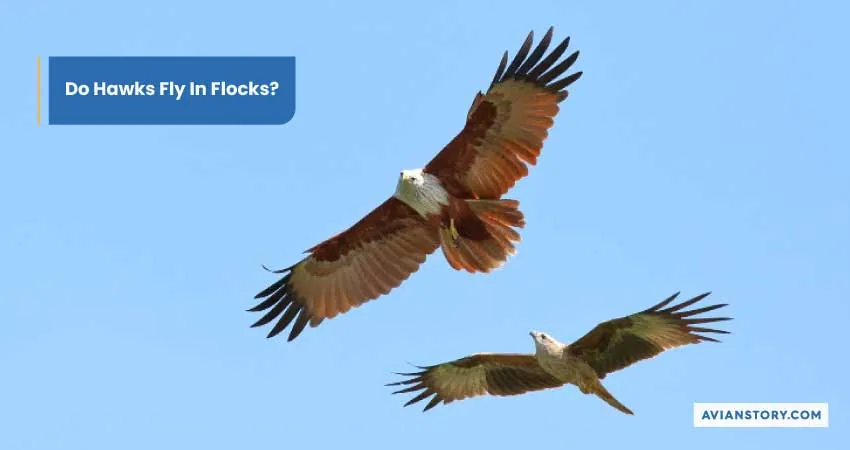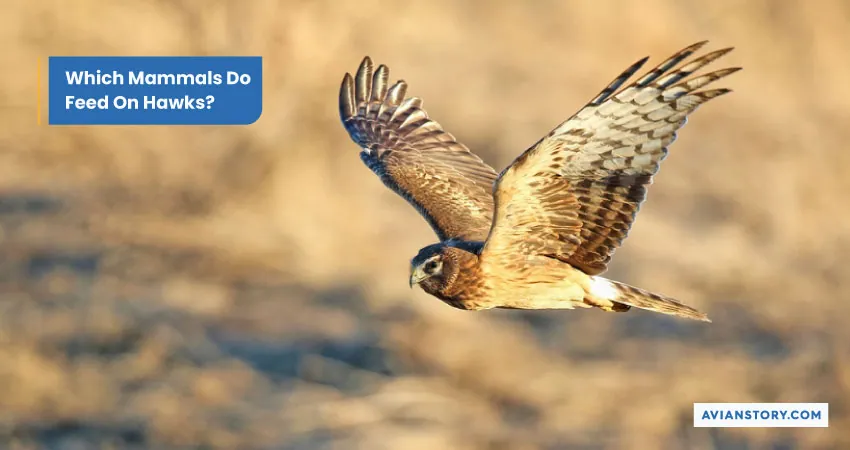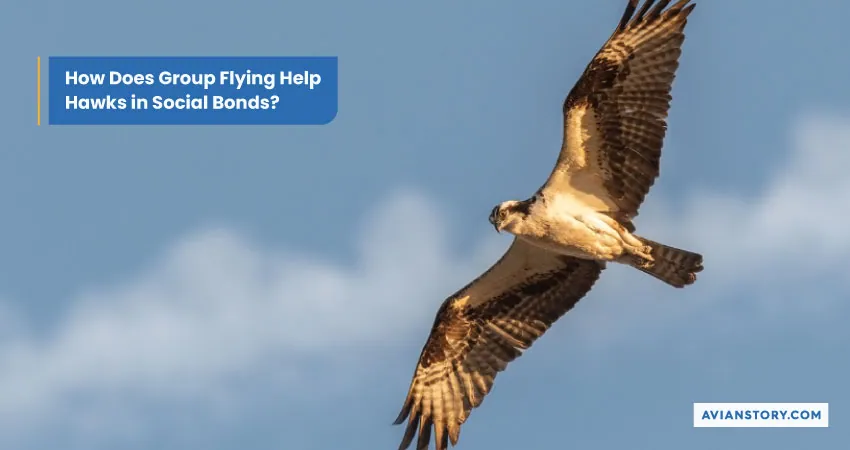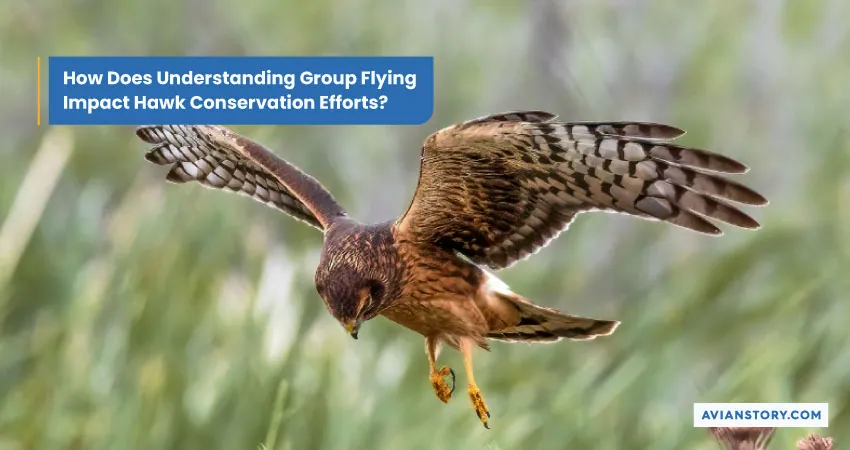Do Hawks Fly in Groups? Hawks’ Flying Behavior
Hawks are predatory birds that are part of the Accipitridae family and are popular for their great flying skills and sharp vision. Did you know there are over 200 species of hawks found around the world? Knowing whether they fly in groups is a crucial aspect to understand their behavior.
So, do hawks fly in groups? Usually, hawks like being on their own, but on certain occasions, they can gather in groups called kettles when they’re migrating or searching for prey. These kettles are temporary and help the hawks fly more efficiently using thermal updrafts.
In this article, we will discuss whether hawks fly in groups and what factors contribute to their flying behavior. So, if you want to learn more, keep on reading!
Do Hawks Fly In Flocks?

Do you know hawks usually prefer to fly and hunt alone? However, various types of hawks, like the Red-tailed hawk, Cooper’s hawk, Harris’s hawk, and Broad-winged hawk, are known to migrate in groups.
Flying in a group allows these birds to conserve energy and up their chances of finding food while they are on the move. By using thermal currents and updrafts, they can climb to greater heights with less effort, covering more ground and expending less energy.
A study conducted by The Wilson Journal of Ornithology found that hawks migrate more successfully in large groups as opposed to flying alone or in smaller flocks. In addition, hawks may fly together when hunting or during aerial courtship displays with their mate.
What Elements Encourage Hawks to Fly in Groups?

Although hawks are known to be solitary birds, certain factors encourage them to fly in a flock. We enlisted the elements below that encourage hawks to fly in groups.
Thermal conditions
Hawks are big birds that hunt other creatures in the wild. They like to use thermal updrafts to travel with less energy.
When warm air rises up from the ground, it creates these updrafts, and the hawks can fly higher without having to waste much energy. Sometimes, if a lot of hawks find good updrafts in one place, they might gather together and fly as a group.
During migration
Did you know that adult hawks traveled 2,376 km annually from September to November? A study by the Journal of Raptor Research discovered that hawks spent 64% of the year away from hawks nesting areas.
They often fly in groups, known as “kettles,” during these journeys. This helps them stay safe, save energy, and navigate better. When they fly together, hawks are less likely to be attacked by other animals and can share information about where they are going.
Cooperative hunting
Sometimes, Hawks might cooperate to hunt in groups. This kind of hunting mostly occurs when there is a lot of prey available, and hunting becomes difficult because the prey is large or hard to catch.
Cooperative hunting, Research conducted by The Neotropical Ornithological Society, titled “POSSIBLE SOCIAL FORAGING BEHAVIOR IN THE RED-BACKED HAWK” suggests that hawks increase their success in capturing prey when working together. By cooperating, they can effectively scare prey out of hiding and coordinate their attacks
Group interactions
Hawks occasionally fly in groups, which helps them connect socially, communicate better, and learn from each other. Furthermore, young hawks may spend time with adults to pick up useful skills, including hunting, navigating, and marking territory.
Effectively identifying predators
When hawks fly in bigger groups, they become safer from potential threats. This is because when there are many of them, it is harder for predators like big owls, eagles, snakes, and raccoons to spot and attack an individual hawk.
Also, when they are flying together, hawks can watch out for danger more effectively.
Courtship rituals
Hawks use group flights as a strategy to interact with one another and find a mate. They perform remarkable aerial displays during these flights, hover in midair, flap their wings, make noises, and dive at a speed of 120 mph.
It is a chance for them to look for potential mates, display their fitness, and develop their existing bond.
How Do Different Hawk Species Demonstrate Group Flying?
Did you know that various hawk species can display various flight behaviors? Check out the details provided below to learn more about the group flying behaviors of several hawk species.
| Common Hawk Species That Fly in Groups | Common Hawk Species That Do Not Fly in Groups |
| Red-tailed Hawk | Ferruginous Hawk |
| Swainson’s Hawk | Galapagos Hawk |
| Cooper’s Hawk | White-tailed Hawk |
| Broad-winged Hawk | Gray Hawk |
| Harris’s Hawk | Ring-tailed Hawk |
| Red-shouldered Hawk |
Red-tailed Hawk (Buteo Jamaicensis)
Red-tailed hawks typically fly alone. But during migration, they may form a group and fly in a V-shape to aid one another in flight. Moreover, when resting, they may perch on trees or buildings with other Red-tailed hawks.
Cooper’s Hawk (Accipiter Cooperii)
Cooper’s hawks like to be alone in most situations. However, they may join smaller groups of other hawks to travel together when it is time to fly to a new location.
During this time, they do not fly very close to each other, but flying in a group makes it easier for them to search for food and navigate their path.
Red-shouldered Hawk (Buteo lineatus)
Red-shouldered hawks are usually seen flying in pairs while doing courtship displays and protecting their territory. Moreover, they might join other hawks to fly together in thermal updrafts to save energy during their migration.
Broad-winged Hawk (Buteo Platypterus)
Broad-winged hawks are social birds that gather together in groups of hundreds or thousands of hawks. Afterward, they spiral upwards on thermals before gliding to their next destination.
Harris’s Hawk (Parabuteo Unicinctus)
Harris’s Hawks are unique among raptors due to their natural instinct for cooperative hunting and group flying.
Multiple hawks work together in social packs to guard and hunt their territory. Additionally, the hawk packs maintain a hierarchy and engage in coordinated flight patterns.
Swainson’s Hawk (Buteo Swainsoni)
The Swainson’s Hawk is well known for its social nature and frequently flies in flocks. Studies show that these raptors migrate in huge groups to South American areas where they spend the winter. When they travel together, they are known to create “kettles.”
What Effect Does Group Flying Have on Hawk Hunting Methods?

There are several effects that group flying has on hawks’ hunting methods. Read the information below to know more.
Benefits of Group Hunting in Hawks
A study by Sergio Alvarado Orellana & Ricardo A. Figueroa Rojas found that hawks, hawks target larger animals more effectively when they hunt in groups. For instance, Harris’s Hawks cooperate and use their instincts to hunt.
They alternate roles as hunters or watchers, with one member often perched while the others look for prey. A study by Jennifer E. Leyhe and Gary Ritchiso from the Department of Biological Sciences at Eastern Kentucky University found that Red-tailed Hawks tend to spend more time perched on barren branches and snags before approaching their prey.
Techniques Employed in Group Hunting
When hunting in groups, hawks use a variety of strategies, including “stacking.” The process of stacking involves hawks flying one over the other to locate prey and block ways to escape before diving down to capture it.
Hawks additionally use the “backing up” strategy, where they surround potential prey and slowly move in to force it to run, which makes it easier to catch. Furthermore, Broad-winged hawks make big circles or kettles in the sky, using their large numbers to deceive and catch prey.
Hawks frequently interact with one another during hunting flights. They tend to use vocal sounds and body language to coordinate their movements and alert one another to the location of prey.
Read Also: Do Hawks Hunt At Night?
How Does Group Flying Help Hawks Migrate?

Hawks can benefit from group flying, also known as kettle soaring, in a number of ways while migrating. The benefits hawks get from group migration are as follows.
Saves energy during long travels
Hawks use warm air currents to fly high without flapping their wings. They can also save energy and travel long distances by flying in groups and sharing information about these warm air currents.
When hawks fly together, they can follow the movements and signals of other hawks to find the best path and prevent dangers or bad weather.
Provides better security
Hawks can better fend off predators when they migrate in groups. Predatory birds or other threats may flee if there are several hawks present. Additionally, if there is a threat, one hawk in the flock may detect it and use vocalizations to warn the others.
Quickly adjusts to changes in the weather
It might be challenging to predict the weather during migration because of wind patterns and storms. Hawks fly in groups so they can quickly adapt to such changes. Each hawk in the group can detect changes in the weather and try to find shelter.
How Does Group Flying Help Hawks in Social Bonds?

Hawks’ group flying style can foster social relationships in various ways, such as:
- Hawks can more successfully catch prey when they fly in groups. Thus, it fosters a sense of teamwork among the Hawks, which improves their bonds.
- Hawks depend on one another for protection while flying in flocks. As a result, their sense of interdependence and trust grows, increasing their social connections.
- During group flights, hawks can communicate with each other verbally. This communication helps them coordinate their movements and understand each other, leading to stronger social bonds.
- Hawks can learn from each other and develop social skills, especially young hawks who can learn from experienced adults.
- Hawks cooperate with each other to protect their habitats, which creates a sense of belonging among group members.
How Does Understanding Group Flying Impact Hawk Conservation Efforts?

You must learn more about how hawks fly in groups if you wish to boost their conservation efforts. The Wildlife Damage Management Technical Series states that in the past, the most common cause of death for red-tailed hawks was intentional shootings by humans. However, hawks also encounter other human-related threats, such as:
- Collisions with vehicles, trains, and airplanes.
- Electrocution.
- Collision with tall buildings, wind turbines, electric poles, and bridges.
- Poisoning due to exposure to pesticides and lead.
- Illegal trade of birds.
Hawks migrate over long distances. By studying how hawks fly in groups, biologists can learn about the routes they take, where they stop along the way, and where they spend their winters.
This knowledge is valuable in creating protected areas along their migration paths, identifying good places for nesting, and evaluating the suitability of habitats.
Additionally, it helps in decreasing dangers such as habitat loss and fragmentation. For instance, the Golden Gate Raptor Observatory uses banding and hawk watch programs to encourage the preservation of hawks and their habitats.
FAQs
To learn more about whether hawks fly in groups, see some of the most frequently asked questions below.
How do you identify a hawk flying in a flock?
You can notice hawks flying in groups by keeping an eye out for birds that are flying closely together and communicating through visual cues and vocalization.
How do hawks communicate with each other when flying in a group?
Hawks primarily communicate through body languages and vocalizations, such as screeches or calls. They use these signals to coordinate their movements and identify potential prey
How far can hawks travel during migration?
Hawks can travel several thousand miles during migration, depending on the species, with some traveling as far as 14,000 miles in a single year.
Are there any risks associated with flying in a group for hawks?
One potential risk of flying in a group for hawks is increased competition for food. Additionally, if one hawk is injured or sick, it could potentially spread to the rest of the group.
Final Words
To sum up, while some bird species are known to fly in flocks or groups, hawks typically prefer to soar solo. Hawks are known for their solitary hunting techniques and territorial behavior, and as a result, they tend to avoid flying in groups.
However, this rule does not apply to all hawk species. Some species, such as the Red-tailed Hawk, Harris’s Hawk, and Broad-winged Hawk, have been seen flying in pairs or groups during migration. They may also fly in groups while searching for food or when defending their territories.
